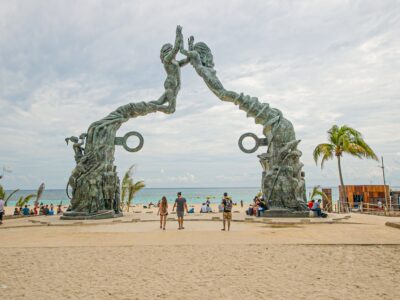The accelerated urban development in Yucatán, driven by the real estate boom of the last decade, is intensifying an environmental problem: bird collisions with buildings, windows, and other structures. This phenomenon affects both local and migratory species, becoming a growing concern among specialists and activists.
In Yucatán, 456 species of birds have been recorded, that is, 43% of the national birdlife. In addition, the state, due to its strategic location on migratory routes, is a crucial point for birds arriving from North America during the winter. According to data from the Yucatán Scientific Research Center (CICY).
Gilberto González Kuk, technician of the Conabio Urban Bird Program, highlighted the avifaunal richness of the region and its vulnerability to urban growth. “More than 120 million birds die every year due to collisions worldwide, and Yucatán is not exempt from this number.”
Collisions, exacerbated by the use of reflective materials and modern architectural design, leave birds with fractures, and hemorrhages and in many cases cause death: “In just three days, up to 50 cases of collisions can be recorded in Mérida,” said Felipe. Cazola Rentería, biologist at UADY.
Urban growth between Mérida and Progreso, said the specialist, has reduced clear spaces, creating a continuous corridor of structures that represent obstacles for birds. Vertical development, characterized by reflective windows and bright lights, has intensified the problem.
In addition, Cazola pointed out, that light pollution, especially during festivities, affects the orientation patterns of migratory birds.
In rural areas, the increase in cables, signage, and isolated residences also generates significant impacts on natural habitats.
Given this panorama, specialists and citizen groups have proposed various strategies to reduce the impact of collisions, such as the management of bird-friendly glass, such as implementing visible patterns with anti-reflective coatings.
As well as reducing night lighting, especially during migration periods, implement municipal regulations that force construction companies to consider the environmental impact of their projects.
A virtual map developed by groups of bird watchers already identifies critical points in Mérida, including species at risk and possible solutions. However, both González Kuk and Cazola regretted the lack of resources and government interest to implement these measures comprehensively. In Mexico, there is no generalized regulation that contemplates specific fines for real estate developers for bird collisions. However, some states such as Mexico City and Quintana Roo have established environmental guidelines that, indirectly, contribute to the protection of fauna.
TYT Newsroom
The post The real estate boom impacts bird life in Yucatan first appeared on The Yucatan Times.














